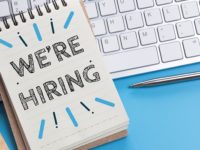As COVID-19 continues to shape the nature of work in 2021, and we grapple with how best to move forward, there is an opportunity for small businesses around Australia to “Future-Flex”. That is, to mainstream flexible work – and, what’s more, do it in an inclusive way.
Because while the pandemic’s “silver linings” of increased flexibility and working from home are beneficial for some, there is a risk that inequities are being baked in.
The Sydney Morning Herald recently reported that as two-thirds of Australians continue to work from home after initial pandemic restrictions these changes have left many mothers taking on a greater share of domestic labour. Being, as they are, more likely to try to juggle paid work, care and domestic tasks and not let any balls drop.
COVID-19 has created an urgency, a demand and an opportunity to have flexible working that is inclusive of everyone and, critically, works as a business tool designed to meet organisational needs. Not just as an, albeit important, life hack for some employees.
At this juncture in the pandemic, DCA recommends forward-thinking small businesses take this opportunity to mainstream flexible working with the following key principles from our visionary “Future-Flex” guidelines; Australia’s playbook for flexibility in this post-pandemic world.
- Flexibility: starts with the team
Future-Flex requires shifting from “individual accommodation” to a “team design” mindset. So, instead of accommodating one individual’s flexibility request to improve their work-life balance, the focus needs to be on designing all team members’ work and jobs for flexibility to maximise both the performance of your small business and individual wellbeing.
This involves sitting down and reviewing the components of all team members’ jobs (their tasks, responsibilities, work relationships, location, timing), rather than the job of just one person.It also involves proactively looking for opportunities to enable flexibility in teams. And ensuring team members at all levels, most critically those in leadership roles, engage in some form of flexible work to set the tone of business-driven flexibility. - Flexibility: challenges assumptions
Shifting to a Future-Flex mindset involves being aware of and challenging our own biased assumptions about what it means to be a flexible worker. As a leader in a small business, you should, where possible, provide employees working flexibly with access to career development opportunities and shout about this from the rooftops. - Flexibility: as a business tool
Future-Flex sees a radical move from ad-hoc individual accommodations to strategic team design. It boosts the performance and wellbeing of organisations and teams, as well as individuals, in the process meeting business goals like improved customer service, innovation, growth and efficiency.
Ultimately, the question shifts from: how can we accommodate an employee’s request for flexible work to how can we design team members’ work to maximise the performance and wellbeing of our small business, teams, and individuals? - Flexibility: gets defined broadly
Finally, Future Flex sees a complete re-definition of what flexible work means. At the moment, flexibility is often defined narrowly, limited to working from home and part-time work, which is often accessed informally, for childcare reasons, and in lower-level roles. But flexibility is much, much broader than just working from home.
Future-Flex defines flexibility as including a variety of ways for team members to work flexibly, which can involve formal or informal arrangements, any role (including managerial roles), and can be accessed for any reason across your small business.















